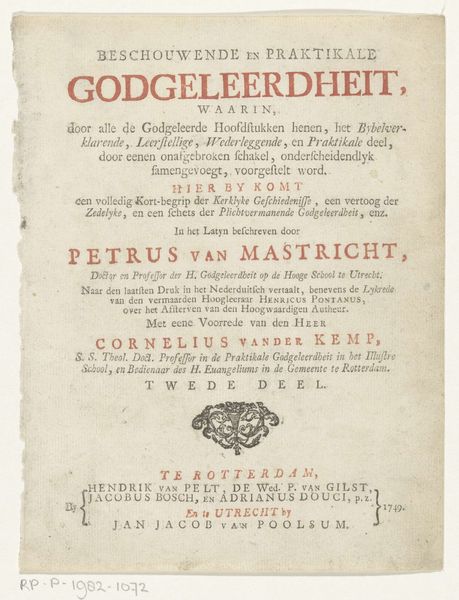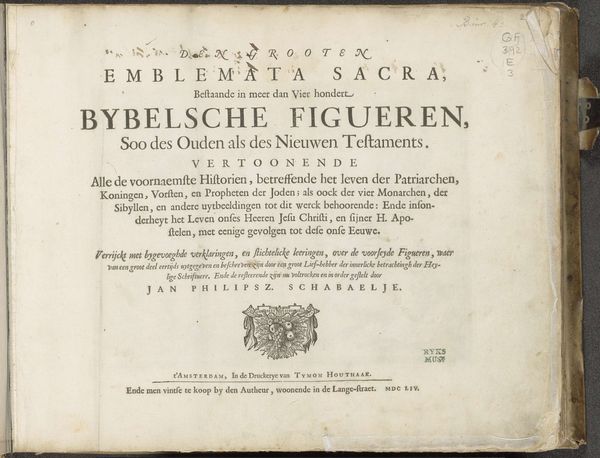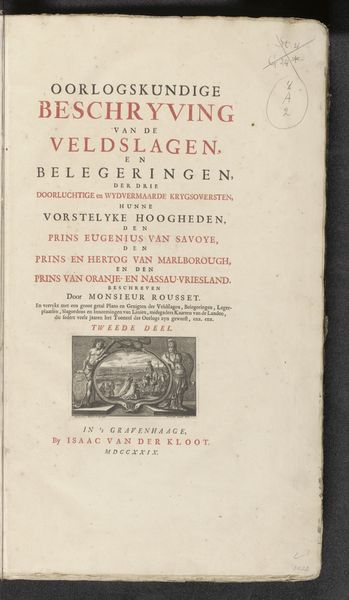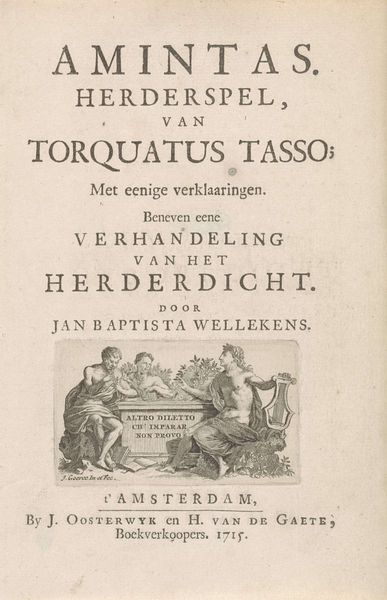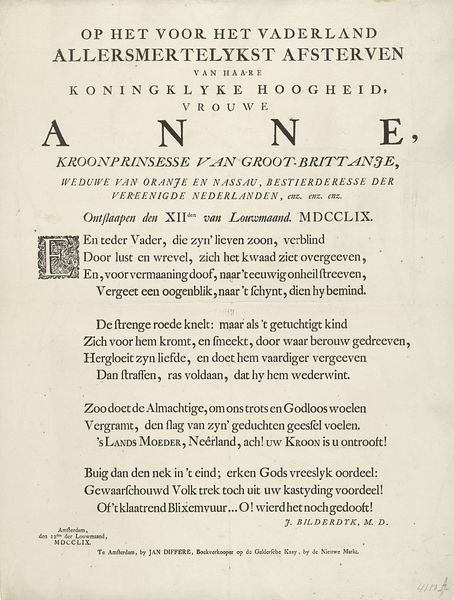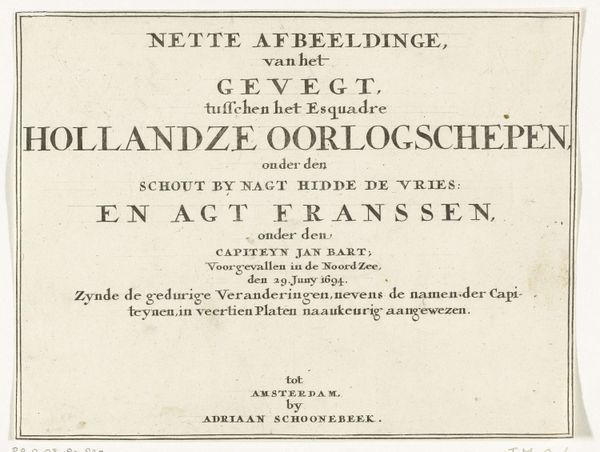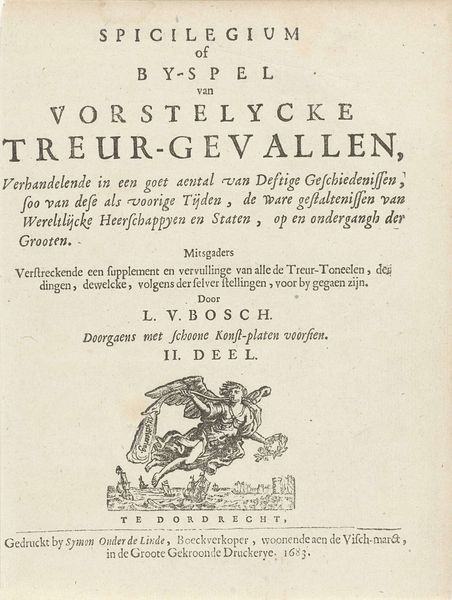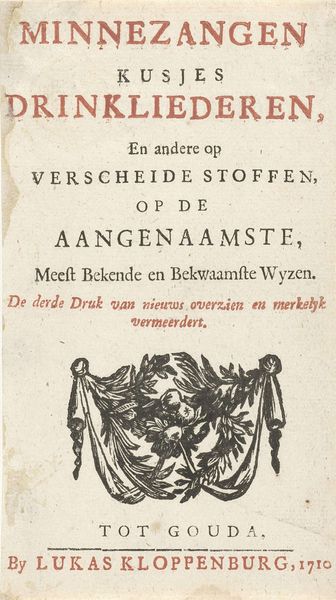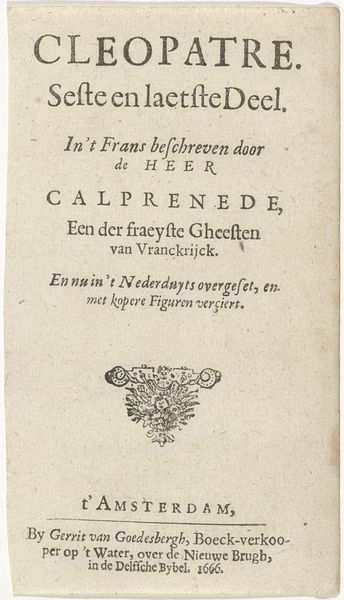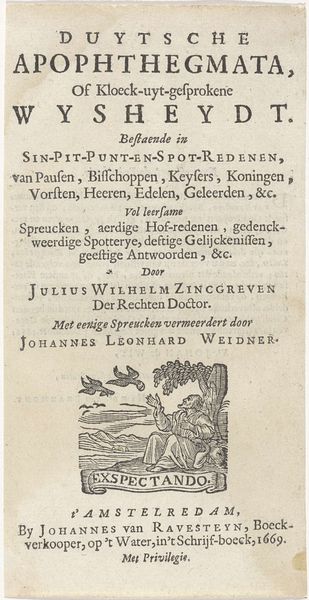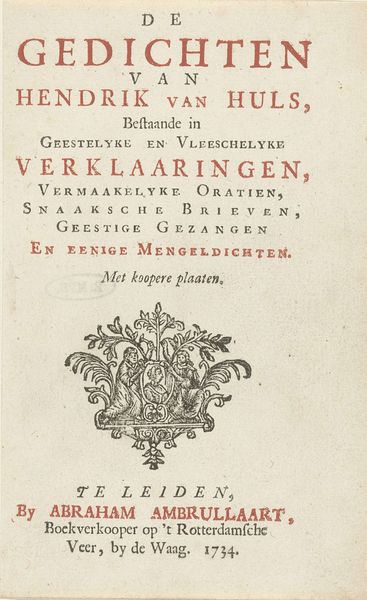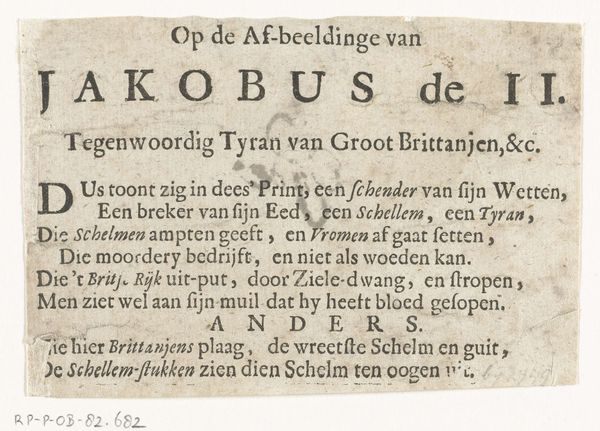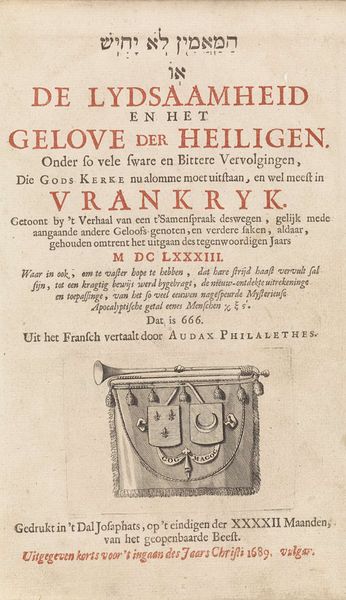
print, typography, engraving
#
dutch-golden-age
# print
#
typography
#
engraving
Dimensions: height 237 mm, width 360 mm
Copyright: Rijks Museum: Open Domain
Curator: Look at this remarkable title page, "Titelpagina voor: De herscheppingen van P. Ovidius Naso," dating back to 1728. Hendrik Bosch is credited with this piece which resides at the Rijksmuseum. Editor: Immediately I’m struck by the typography. It's clean, yet stately—reflecting the period, but what about the socio-economic dynamics? I mean, books and their illustrations during this time signaled a very specific form of elite cultural consumption, right? Curator: Precisely. This piece, realized through typography and engraving, served not just as a cover, but as a signifier. Consider the publisher’s detail: ‘Hendrik Bosch, Boekverkooper, over 't Meysjes Weeshuys’ indicating this work was produced in close proximity to systems of labor and institutional support. We must not underestimate how materials were obtained, the economic dependencies... Editor: And what Ovid’s ‘Metamorphoses’ represented – tales of transformation, often with gendered and power-laden undertones. So, while ostensibly a classical text, we have to ask who had access to this knowledge, and how the imagery impacted prevailing attitudes on these themes, particularly towards women in that era. This title page acted as a kind of gatekeeper, reinforcing structures. Curator: You've rightly framed its social role. From a material perspective, note the craft. Typography involved specific skilled labour. Who were these typographers, and what was their social standing within 18th century Amsterdam society? Editor: Right, and how was that labor valued, or devalued based on gender or origin? Works such as this existed in a matrix of production, readership, and critical consumption. Examining all facets of those stories helps broaden our perspective of how the classical world shaped 18th century norms. Curator: Examining that framework exposes a network far broader than a mere 'book cover', which is a more helpful appreciation, I believe. Editor: Indeed. It invites us to see the labor and prevailing attitudes encoded within a single title page. It encourages questioning the apparent order we perceive in this art and its influence on the culture.
Comments
No comments
Be the first to comment and join the conversation on the ultimate creative platform.
